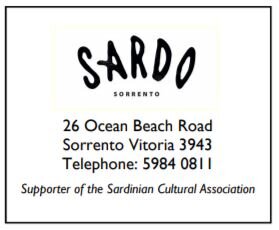History
Forged in the Crucible of History
Sardinia's history is very ancient. In 2004, in a cave in Logudoro, a human phalange (toe or finger bone) was found that was dated to around 250,000 BC. Sardinia's prehistoric inhabitants developed a trade in obsidian, a stone used to make the first tools, mined from the volcano Mt Arci, and this first brought Sardinians into contact with the rest of the Mediterranean world. Desiccated grapes recently found in several locations have been DNA tested and proved to be the oldest grapes ever located, dating back to 1200 BC. The Cannonau wine is made with these grapes and may be the ancestor of all European wines.
From Neolithic times until the Roman Empire, the Nuragic civilisation took shape on the island. This little-known people built - truncated beehive-shaped towers, constructed of huge square blocks of stone, usually located in a strategic position. Some are more than 20 metres in height although they have no foundations and stand only due to the weight of the stones, as much as several tonnes. More than 8,000 nuraghes still stand.
Around 1000 BC, Phoenician mariners began to arrive. In 509 BC, war broke out between the native Nuragic people and Phoenician settlers, who called for help from Carthage, and the island became a province in the Carthaginian Empire. In 238 BC, after being defeated by the Roman Republic in the First Punic War, Carthage was forced to fight an uprising of former mercenaries who had not received their promised pay. Imperial Rome seized this opportunity to annex Corsica and Sardinia without resistance from the overstretched Carthaginians.
From 456 - 534, Sardinia was a part of the short-lived North African kingdom of the Vandals, until it was reconquered by the emperor Justinian I. During this time many Germanic Vandals and Iranic Alans settled on the island.
In 1323, the Kingdom of Aragon began a campaign to conquer Sardinia; the giudicato of Arborea successfully resisted this until defeat in the decisive Battle of Sanluri, June 30, 1409. The native peopulation of the city of Alghero was expelled and the city repopulated by Catalan invaders, whose modern descendants still speak Catalan. After the merge of the Kingdoms of Castile and Aragon, Sardinia was incorporated into the newly created Spain.
In 1718, Sardinia became an 'independent' vassal kingdom under the House of Savoy, rulers of Piedmont.
n 1792, Jean-Paul Marat, son of a Sardinian father from Cagliari and a Swiss mother, was one of the triumvirate leading the French Revolution. In 1793 Sardinians rebelled, demanding autonomy in exchange for helping to defeat French invasion forces. Autonomy was grated in the combined kingdom of Piedmont-Sardinia, but after the French threat to the kingdom lessened, the king took back his authority.
In 1860, Vittorio Emanuele II, King of Sardinia became also the first King of Italy after conquering the rest of the peninsula. Thus Sardinia has been strongly influenced by successive waves of invaders and immigrants since time immemorial. Yet aspects of the ancient culture intriguingly live on.
Artistic Traditions Ancient and Modern
Sardinia is one of the world's most interesting musical destinations and is home to one of the oldest forms of vocal polyphony, Canto a Tenores, which features guttural sounds similar to Tuvan (Mongolian) throat singing. Cantu a Cuncordu, another polyphonic style of singing, similar to the Corsican Paghjella and liturgic in nature, is also found in Sardinia.
A unique and ancient Sardinian musical instrument is the Launeddas, consisting of three reed canes, which produces distinctive harmonies.
The tradition of Cantos a Chiterra (guitar songs) has its origins in town squares, when artists would compete against one another. It lives on in new forms. Sardinian culture is alive and well, and young people are actively involved in their own music and dancing. The new generation of Sardinian artists is a force to be reckoned with. Sardinia has produced some famous musicians - jazzman Paolo Fresu and fold singer Elen Ledda are internationally known. Sardinian-born musician Fabio Melis has creatively blended the haunting tones of the launeddas with the mystical sounds of the didgeridu, with which it shares a 'circular breathing' playing technique.
Sounds of Sardinia and Australia
Significance & Meaning
Sardinian Day (Sa Die De Sa Sardigna)
This festival commemorates the 'reawakening' of the Sardinian people when they revolted on 28 April 1794 against the domination of Piedmont in Sardinia by forcing the expulsion of the Piedmontese viceroy , Balbiano, from Sardinia. The revolt was spurred by the refusal of the King, based in Turin, to reinstate the basic rights of the people of Sardinia which had been previously guaranteed by Treaty. Since 14 September 1993, when the Parliament of the Autonomous Region of Sardinia passed a law formally recognising the festival, Sardinians all over the world got together to celebrate 'Sa Die De Sa Sardigna'.
Sardinians are proud of their history, language and culture and on this day celebrate the richness of their heritage which has survived and flourished, perhaps despite their struggles under the dominion of the many foreign invaders who were present on the island through the centuries, attracted particularly by Sardinia's natural resources and strategic position.
This special day means not only remembering the past but getting together with family, friends, Sardinians and lovers of Sardinia and to be grateful for the richness Sardinia has contributed to all our lives.
The Sardinian Flag with the 4 Moors
The shield with a red cross and the four masked moors is the symbol of the Sardinian people.
Moving from Sardinia to Spain, scholars have searched through history and legend in an endeavour to reconstruct its origin, its meaning and its movements, while the crest with the four Moors continues to remain bascially a mystery.
The Spanish tradition viewed it as a creation of King Pietro d'Aragona, which would mark the victory of Alcoraz (1096), said to have been gained also with the intercession of St. George (white background and the red cross). At the end of the battle, four severed heads of the defeated Arab kings would have been abandoned on the ground (four Moors).
The Sardinian tradition is based on the Spanish one. Contrary to any historic evidence, it maintained that the legendary crest owed its origin to a standard presented by Pope Benedict II to the citizens of Pisa who were fighting alongside the Sardinians and Italy (1017).
Actually the oldest evidence of the crest dates back to 1281, and it consists of a seal from the royal palace of Peter the Great of Aragon. But we have to wait until the second half of the XIV century to see the four Moors associated with Sardinia, thus symbolising the kingdom from within the confederation of the Aragona crown.
Having thus been imported by the Kings of Aragon, the symbol figured in Sardinian print and works, in its currency and on standards belonging to the special corps of Tercios De Cardena, which had been established by Charles V for the defence of the Island, and which had already distinguished itself at Tunis (1535) and at Lepanto (1571) during the campaign against the Turks.
During these centuries, the composition of the symbol is rather confusing, with the heads of the four Moors been represented in various poses: somethimes facing right or left, or forward; without blindfolds, with a crown, or with blindfolds around their foreheads.
The composition which has come down to us has its origin in the seventh century, and has the heads facing left and the blindfolds over the eyes. We will never know whether the last innovation had to do simply with chance or with the malicious intention of pointing to the repressive attitude of the Piedmontese government towards the people of Sardinia.
The crest appear among the armed forces made up of the Piedmontese dynasty, on documents, on Sardinian currency and on flags. Eventually it figured in the standards of Sardinian soldiers, among which the Brigata "Sassari", which had gained legendary status following the heroic battles during the Great War against the Austrians.
In 1952 the shield with the four Moors became the official crest, and was the centrepiece of the standard of the Autonomous Region of Sardinia (decree of the President of the Republic, July 5 1952)
Today the Sardinians have their own flag (regional law of April 15 1999 No. 10), but the four Moors, mindful of the Piedmontese effrontery, have purposefully turned their heads and opened their eyes, while the blindfold remain on their foreheads.
(Bibl. B. Fois, "The crest of the four Moors, brief history of the Sardinian emblem", Ed Carlo Delfino, Sassari 1990)





